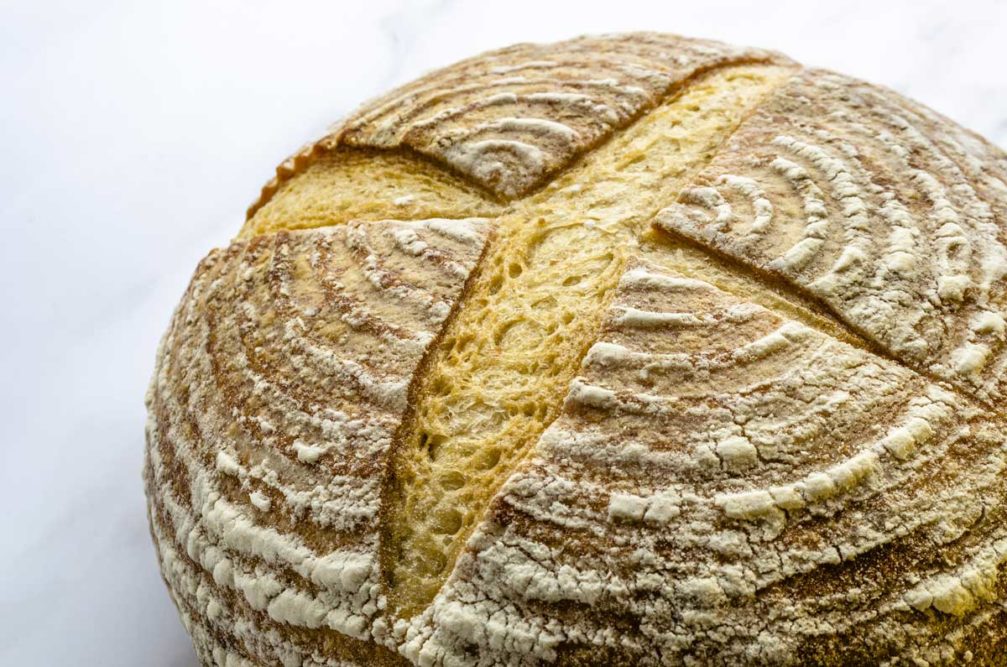The future of bread lies in its past. That seems to be where consumer trends have been moving for a while with increased interest in natural ingredients, fermentation and artisan breads. In an effort to understand where bread might be heading under this assumption, Michael Gleason, product manager, bakery flavors and sourdough, Puratos, looked back at the history of bread and sourdough in the education session “The Future of Bread and the Biodiversity of Sourdough” at the American Society of Baking’s BakingTech 2020 Conference, held March 1-3 in Chicago.
“Bread has been around for thousands of years, and the basic formulation of bread has remained largely unchanged during much of that past,” Mr. Gleason said. “It was simply water, flour, salt and a sourdough as the natural source of leavening.”
Sourdough was critical to bread both for its functionality and also for providing its unique flavor profile until about 200 years without the invention of commercialized yeast. With commercialized yeast, bread was able to be produced commercially as well, and the industry moved away from sourdough.
“Commercialized yeast did a number of fantastic things for the industry,” Mr. Gleason said. “We could produce bread faster, more efficiently and more affordably, which was fantastic because when this commercialized yeast was invented the world was growing very quickly and we were able to feed the growing population.”
Flour, water and bacteria are the basics of sourdough fermentation, but time and temperature have a major impact on the final product’s flavor profile.
“Within this slurry of flour, water and microorganisms, the starch and protein as well are being digested by the yeast and the bacteria,” Mr. Gleason explained.
This digestion results in the carbon dioxide that allows the bread to rise as well as the fruity, floral flavor notes associate with sourdough.
Hydration, however, will have a huge impact. Doughs that have higher hydration tend to develop flavors associated with lactic acid, and lower hydration results in more acetic acid. Colder temperatures also result in more acetic acid, and warmer temperatures bring about more lactic acids. Flavor is also impacted by the substrates being worked on in the fermentation process as well as the many strains of yeast available. This back-to-the-past process is more complicated than it seems on the surface.
“There are infinite possibilities of flavor with sourdough,” Mr. Gleason said, referencing these many strains of yeast and their impact on the dough.
While sourdoughs provide flavor they do much more, he continued. Each sourdough has its own story and culture attached, as sourdoughs are affected by the flour and water that feed them and even the ambient environment they grow in. They also might offer some health benefits or at least a healthy perception.
“There’s this element of craftmanship,” he said. “Sourdough typically takes longer to make, there’s a longer fermentation step. When you’re taking the time to do something, you’re taking the time to do it right, so sourdough is more than just a way to deliver flavor.”
With modern techniques, however, sourdough has improved to deliver its flavor and function more consistently, such as a waxy texture, its anti-molding properties and its digestibility.
“Consumers are really looking for this,” he said. “Consumers are driven by freshness, taste and authenticity. We’re now in the baking industry put to the challenge to perform at the highest level and deliver high quality and consistency with the best ingredients we have.”
Mr. Gleason closed urging those in attendance to be inspired by the past, but to not be trapped in it. He encouraged the industry to use modern processes and technology to create a better quality and more consistent sourdough bread that takes advantage of its diverse flavor profiles and zeroes-in on its functionality.





